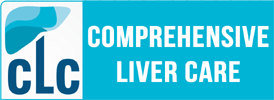Nonalcoholic fatty liver disease (NAFLD) is an increasingly common condition that affects a significant portion of the global population. Unlike alcoholic liver disease, NAFLD occurs in individuals who consume little to no alcohol. This blog explores the diagnosis and treatment of NAFLD, providing valuable insights for those affected by or at risk of this condition.
What is Nonalcoholic Fatty Liver Disease?
NAFLD is a condition where excess fat builds up in the liver cells. It can range from simple fatty liver (steatosis) to more severe forms like nonalcoholic steatohepatitis (NASH), which can lead to liver fibrosis, cirrhosis, and even liver cancer.
Diagnosis of NAFLD
1. Medical History and Physical Examination
The diagnosis of NAFLD typically begins with a detailed medical history and physical examination. Doctors will inquire about your lifestyle, dietary habits, alcohol consumption, and any underlying health conditions such as diabetes, obesity, or metabolic syndrome.
2. Blood Tests
Blood tests are commonly used to assess liver function and identify potential liver damage. Key markers include:
- Alanine Aminotransferase (ALT) and Aspartate Aminotransferase (AST): Elevated levels of these liver enzymes can indicate liver inflammation or damage.
- Lipid Profile: Measures levels of cholesterol and triglycerides in the blood.
- Fasting Blood Sugar and Hemoglobin A1c: Assess for diabetes or insulin resistance.
3. Imaging Studies
- Ultrasound: A non-invasive imaging technique that can detect fat accumulation in the liver.
- Computed Tomography (CT) Scan and Magnetic Resonance Imaging (MRI): Provide more detailed images and can help in assessing the extent of liver fat and potential fibrosis.
4. Liver Biopsy
In some cases, a liver biopsy may be recommended to confirm the diagnosis and determine the severity of liver damage. A small sample of liver tissue is extracted and examined under a microscope. This is particularly useful for distinguishing between simple steatosis and NASH.
5. Non-Invasive Tests for Liver Fibrosis
Several non-invasive tests can assess liver fibrosis, such as:
- FibroScan (Transient Elastography): Measures liver stiffness to detect fibrosis.
- FibroTest and Enhanced Liver Fibrosis (ELF) Test: Blood tests that combine several biomarkers to estimate liver fibrosis.
Treatment of NAFLD
1. Lifestyle Modifications
The cornerstone of NAFLD treatment is lifestyle modification. Key changes include:
- Diet: Adopt a healthy, balanced diet rich in fruits, vegetables, whole grains, and lean proteins. Avoid high-sugar and high-fat foods.
- Exercise: Regular physical activity, such as walking, jogging, or swimming, can help reduce liver fat and improve overall health. Aim for at least 150 minutes of moderate-intensity exercise per week.
- Weight Loss: Losing 7-10% of body weight can significantly reduce liver fat and inflammation.
2. Medications
While no specific medications are approved for NAFLD, several drugs are used to manage associated conditions:
- Insulin Sensitizers: Such as metformin, to improve insulin resistance.
- Lipid-Lowering Agents: Such as statins, to manage high cholesterol and triglycerides.
- Antioxidants: Such as vitamin E, which may help reduce liver inflammation in some patients.
3. Management of Underlying Conditions
Effective management of conditions like diabetes, hypertension, and dyslipidemia is crucial for patients with NAFLD. This may involve:
- Antidiabetic Medications: To control blood sugar levels.
- Antihypertensive Drugs: To manage high blood pressure.
- Lifestyle Interventions: Including dietary changes and physical activity.
4. Regular Monitoring
Patients with NAFLD should undergo regular monitoring to assess liver function and detect any progression of the disease. This may involve periodic blood tests, imaging studies, and consultations with a hepatologist.
5. Advanced Treatments
In cases where NAFLD progresses to cirrhosis or liver failure, more advanced treatments such as liver transplantation may be considered.
Conclusion
Nonalcoholic fatty liver disease is a prevalent and potentially serious condition that requires early diagnosis and comprehensive management. Through lifestyle modifications, medical management of underlying conditions, and regular monitoring, many patients can effectively manage NAFLD and prevent its progression. If you suspect you may have NAFLD or are at risk, consult with a healthcare provider to discuss appropriate screening and treatment options.

